Structure of Leaves
Leaf Parts
- 1. Blade: The broad, flat part of the leaf that is optimized for capturing sunlight.
- 2. Petiole: The stalk that attaches the leaf to the stem, allowing it to capture sunlight.
- 3. Veins: The vascular network that transports water, nutrients, and sugars throughout the leaf.
Leaf Types
- 1. Simple Leaves: Have a single blade attached to the stem.
- 2. Compound Leaves: Have multiple leaflets attached to the petiole.
Function of Leaves
Photosynthesis
Leaves are the primary location for photosynthesis, the process by which plants produce food using sunlight, carbon dioxide, and water. The chlorophyll in the leaf captures sunlight and uses it to convert carbon dioxide and water into glucose and oxygen.
Gas Exchange
Leaves also facilitate gas exchange, allowing the plant to take in carbon dioxide for photosynthesis and release oxygen as a byproduct.
Transpiration
Through tiny openings called stomata, leaves release excess water in a process known as transpiration. This helps maintain the plant's water balance and facilitates the transport of water and nutrients from the roots to the rest of the plant.
[Leaves] Related Worksheets and Study Guides:
.◂Science Worksheets and Study Guides First Grade. The Sky
Study Guide The Sky
The Sky  Activity Lesson
Activity Lesson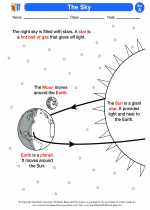 The Sky
The Sky  Worksheet/Answer key
Worksheet/Answer key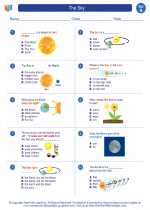 The Sky
The Sky  Worksheet/Answer key
Worksheet/Answer key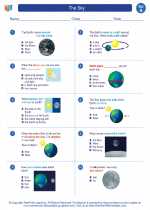 The Sky
The Sky  Worksheet/Answer key
Worksheet/Answer key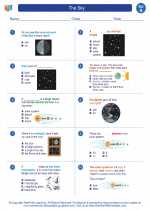 The Sky
The Sky  Worksheet/Answer key
Worksheet/Answer key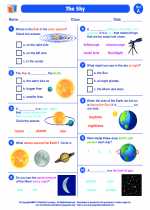 The Sky
The Sky  Vocabulary/Answer key
Vocabulary/Answer key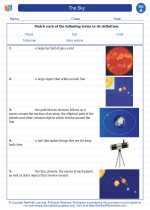 The Sky
The Sky 

 Activity Lesson
Activity Lesson
 Worksheet/Answer key
Worksheet/Answer key
 Worksheet/Answer key
Worksheet/Answer key
 Worksheet/Answer key
Worksheet/Answer key
 Worksheet/Answer key
Worksheet/Answer key
 Vocabulary/Answer key
Vocabulary/Answer key

The resources above cover the following skills:
EARTH AND SPACE SCIENCE (NGSS)
Earth’s Place in the Universe
Students who demonstrate understanding can:
Use observations of the sun, moon, and stars to describe patterns that can be predicted.
Make observations at different times of year to relate the amount of daylight to the time of year.